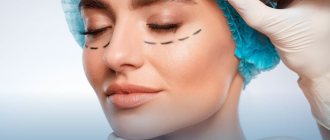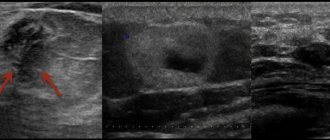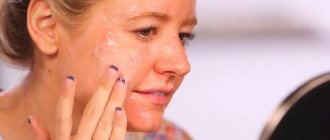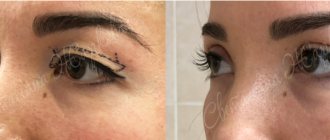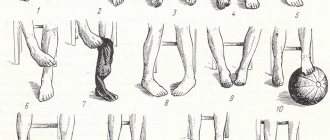- Failed otoplasty.
- Bleeding and hematomas. Since during the operation the surgeon breaks and excises the cartilage tissue in your ears, bleeding and bruising in the postoperative period cannot be avoided. The problem is that hematomas do not go away for a long time, and most likely, within six months you will not be able to sleep on your side, and touching your ears will cause pain. For example, the excessive pressure that a hematoma exerts on the cartilage can lead to its necrosis.
- Wound infection. May develop around the operated area 3 or 4 days after ear otoplasty . It may seem insignificant (manifests itself as slight redness and slight soreness) - and this is its insidiousness. Advanced infection may require surgery.
- During rehabilitation after otoplasty Suture cutting and overcorrection may occur. Basically, both are associated with insufficient competence of the surgeon, incorrect selection of suture material, as well as insufficient preoperative diagnostics. The ears after such otoplasty do not look aesthetically pleasing, and such sutures require surgical removal.
- Warping of the ear cartilage.
The most unpleasant thing is if the ears become uneven after otoplasty. This is mainly noticeable at the site of the formed antihelix and occurs due to the fact that the surgeon did not apply the sutures close enough, and the ear cartilage sought to return to its original position.
Your ears may return to their original position.
Moreover, they can do this asymmetrically, which will make your appearance even more unattractive than if your ears were simply protruding. Another option may be a repeat operation, because... the ears may begin to return to their original position. This can happen for several reasons - the surgeon was not experienced enough, he used self-absorbing suture material, which did not hold the auricle in the desired position for a long enough time. Perhaps the patient himself removed the fixing bandage too early, which led to this result.
Of course, in this case, you will most likely have to have a second operation. And again, no one will give you a guarantee that this operation will be the last.
Unsuccessful otoplasty, the consequences of which were described in this article, is not common, but not such a rare occurrence. Those who decide to undergo otoplasty should remember all these consequences, and also that in many cases, even after removing the compression bandage and sutures, the surgeon will still advise you to wear ear correctors. They are recommended to be worn for about a year after ear otoplasty. They will serve as a good guarantee that your ears will fit snugly to your head, become symmetrical, and you will be happy with your new appearance.
Early rehabilitation period: dressings, sutures, bandage
Lasts only 14 days. Usually, 2-3 hours after otoplasty, the patient can go home. Then within 2-3 days you need to come to the clinic to treat postoperative wounds and dressings. Gauze swabs soaked in antiseptics and healing ointments are applied to the suture area. To relieve pain, the specialist prescribes painkillers and anti-inflammatory drugs to reduce swelling.
A week after the plastic surgery, the sutures are removed. To prevent bleeding, purulent inflammation and accelerate tissue regeneration, we recommend to our patients:
- do not wash your hair until the stitches are removed; after that, use baby shampoos throughout the entire recovery period, as they irritate the skin less;
- sleep only on your back, so as not to accidentally touch the auricle during your sleep and provoke tissue displacement;
- choose a high pillow: resting in this position will help reduce swelling;
- stop wearing glasses;
- exclude physical activity.
Bandage after otoplasty
A circular, elastic or compression bandage is applied on top of the aseptic gauze bandage. Outwardly, it resembles the headband worn by tennis players. It is flesh-colored and, if necessary, can be hidden almost imperceptibly under hair. Such a bandage protects the ear from damage and contamination, helps reduce swelling and bruises, but most importantly, it forces the auricle to take the correct anatomical position.
The compression bandage after otoplasty is worn continuously for the first 7 days. Starting from the second week of rehabilitation, you may not wear it during the day, but you must sleep in it. You can stop wearing it completely only on the recommendation of a doctor.
Preoperative examination
After agreeing on a date for plastic surgery, you will be scheduled for a diagnostic examination. Its purpose is to identify possible contraindications and limitations.
Preoperative diagnosis includes:
- laboratory tests: general blood test;
- biochemical blood test (total protein, ALT, AST, total bilirubin, creatinine, urea, glucose, electrolytes);
- general urine analysis;
- analysis for blood group and Rh factor;
- blood test for HIV, syphilis and hepatitis B and C (HBsAg, HCV);
- blood test for coagulogram (blood clotting);
- analysis for class E immunoglobulins to identify predisposition to allergic reactions in order to correctly select anesthesia;
At this stage it is important to tell your doctor if:
- are taking any medications or contraceptives;
- have had surgery before;
- you have any diseases, allergies;
- about the presence of bad habits (smoking, etc.).
Also, remember what you were sick with before, and take your existing medical documentation with you to your appointment - outpatient records, hospital extracts, test results, etc.
Based on the results of the preoperative examination, the doctor may refuse to perform the operation or postpone its date if he reveals:
- acute diseases;
- exacerbation of chronic pathologies;
- pregnancy;
- decompensated diabetes mellitus;
- blood clotting disorder;
- diagnosed or suspected cancer;
- mental disorders, chronic stress.
If there are no contraindications to the operation, a date is set for it - no later than 2 weeks after the tests (for women - outside the menstrual period).
Rehabilitation after otoplasty: physiotherapy
To accelerate tissue regeneration, hardware cosmetology methods are used. At the SOHO CLINIC, after plastic surgery, patients are prescribed microcurrent therapy using a modern Skin Master Plus device. The purpose of the procedures is to normalize the outflow of lymph and microcirculation, improve oxygenation and nutrition of tissues, and accelerate regeneration. A short course of procedures significantly reduces the duration of the recovery period.
At the SOHO CLINIC, patients after ear plastic surgery are provided with three free physiotherapeutic procedures.
Who should not undergo otoplasty?
Let us remind you about contraindications:
- Cardiovascular system disorders
- Acute infectious diseases
- Allergic reactions
- Previous oncological diseases
- Skin diseases with manifestations in the area of the proposed intervention
- Severe endocrine disorders
The doctor can be stopped by other factors. For example, even if your blood clotting is fine, but you are a woman and you are scheduled for surgery on the day of your menstruation, it is recommended to reschedule the procedure. Because these days the body is “tuned” to bleeding.
Late postoperative period
The main task of the late period of rehabilitation after otoplasty is to create the most favorable conditions for the healing of the ears.
Rehabilitation ends 25-30 days after surgery and consists of the following:
- adherence to dietary nutrition;
- limiting showering and bathing;
- restriction of physical activity;
- maintaining a comfortable temperature regime.
The late period of rehabilitation after otoplasty is characterized by partial loss of sensitivity, a feeling of discomfort and slight swelling. All this indicates that the tissues are not ready to perform their functions in full.
How to prepare for surgery
The patient must first undergo a comprehensive examination, including a blood test. The scope of examinations depends on the type of anesthesia; for otoplasty under anesthesia, the list of examinations is longer.
Two weeks before surgery, you should stop smoking if you smoke. On the eve of the operation, you must wash your hair thoroughly. At home, please prepare a soft elastic fabric strip that will gently press your ears after surgery.
How to avoid complications
The main recommendation is to carefully select a surgeon who specializes in just such operations. This will remove many risks on its own.
The second important point is the patient’s discipline after surgery. You will need to wear a special fixing bandage for two weeks, in which you will eat and even sleep. It is also not recommended to engage in strength sports and generally intense physical training, lift weights, or catch a cold during the recovery period. A weakened immune system can be detrimental to a postoperative wound. And training can even lead to divergence of the seams.
Remember : the doctor can do the most to make you happy with your ears. But it’s worth making some effort for you too!
Otoplasty
Laser otoplasty
Laser otoplasty in St. Petersburg is used quite often. It is carried out using exactly the same methods as conventional ones, and the main difference is the use of a laser beam instead of a scalpel. The main advantages of this procedure include:
- greater accuracy;
- fewer possible complications;
- lack of blood;
- The duration of the recovery period and the operation itself is much shorter.
After ear otoplasty is completed, a special bandage is put on the patient’s head, which allows the ears to be fixed in the desired position. The recovery period, in most cases, lasts about 5-7 days, during which it is forbidden to wet the damaged tissue. At the end of 5-7 days, the bandage is removed, but the patient still needs to follow the doctor’s recommendations. It is worth noting that laser otoplasty is often performed to correct errors of a previous operation or to perform a repeat surgical intervention.
Repeated otoplasty
Sometimes in medical practice there are situations in which a person seeks repeated otoplasty. In most cases, this is caused by the patient’s neglect of the rules of the rehabilitation period. But you shouldn’t blame everything on patients. There are cases in which it was an operational error or an incompletely developed care recommendation that was the main reason for another visit to the surgeon.
For the most part, severe suppuration and failure to obtain the desired result are the factors whose presence forces one to do otoplasty again. The algorithm for preparing, performing the procedure and subsequent rehabilitation is exactly the same. The only point is that at least 6 months must pass after the previous operation in order to minimize possible negative consequences.
For ear correction, you should carefully choose a medical institution. Fortunately, there are enough clinics performing otoplasty in St. Petersburg with highly qualified specialists and modern medical equipment.
Correction of earlobes
Lobe reconstruction is one of the simplest ear surgeries. Representatives of the fair half of humanity most often seek help because their lobes sag due to prolonged wearing of heavy earrings. Men very rarely complain about their lobes and do so only after serious injuries, such as tissue rupture. The earlobe can recover on its own, but the edges will not heal correctly and the appearance will not be the most pleasant.
This operation is performed under local anesthesia and lasts no more than 25-40 minutes. After its completion, the patient does not experience pain or discomfort. No complications are observed. A special patch is applied to the operated ear, which cannot be removed for a week. Final tissue restoration may take several months.
Ear otoplasty is not a complex operation requiring special training or a long period of rehabilitation. In addition, surgical correction of the ears has no connection with hormonal levels or age-related changes; therefore, additional procedures are not necessary. This operation allows you to get rid of both serious pathologies and minor deformations that prevent a person from living a full life. And if in early childhood you can still try alternative methods, for example, ear correctors, then for adults there is only one option - otoplasty.
The cost of otoplasty in St. Petersburg starts from 20,000 rubles and depends on the amount of work that the plastic surgeon will need to do.
Progress of the operation
As a rule, the operation is performed under local anesthesia. However, it is preceded by a calming injection, which relieves unnecessary nervousness, and often the patient falls asleep during the operation. During this time, we make the necessary incisions in the fold behind the ear, correct the shape of the cartilage, moving the tissue to the desired position. The skin is sutured with surgical sutures; upon completion of the procedure, a compression bandage is applied to the operated area. If the patient is a child, we play a cartoon for him. Parents can order the repertoire in advance.



